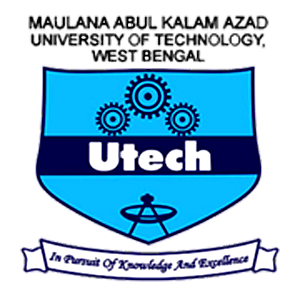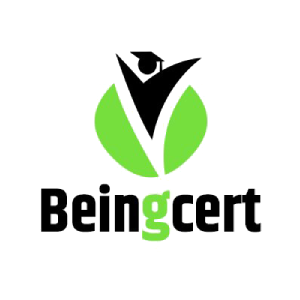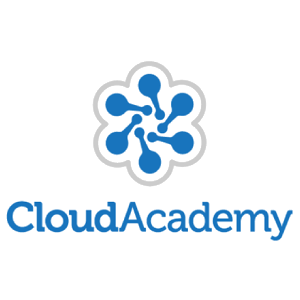Our Partnerships











Amazon Web Services
Simply the best Institute to prepare for AWS certifications AWS Cloud Computing Course Details ( AWS Solution Architect / AWS Developer ) • Prerequisite of Cloud computing – Introduction to TCP/IP, Subnet, NAT, VPN. • Necessary knowledge of OS (Linux) • Introduction to Cloud Computing – Generic View • Evolution of Computing from Standalone, Client-Server, Cluster, Grid up to Cloud • Kinds of Cloud – Private, Public, Hybrid • Introduction To Hypervisor Technology • Introduction to Cloud Architecture (SAAS, PAAS, IAAS) • Pros & Cons Of Cloud Computing • Introduction to Amazon Web Service, Google Cloud Platform & Microsoft Azure. • Making EC2 instance (Exposure to Amazon, Ubuntu, Redhat & Suse Linux at the virtual space) • Making EC2 instance (Exposure to Microsoft Windows 2008, 2012, 2016 at the virtual space) • Comparison with Google Cloud Platform Virtual Machine launching platform • Amazon LightSail (Preinstalled development environment with virtual OS) • Configuring Apache, SMB, NFS, NGINX, Tomcat Server • Introduction to Elastic Container Service – for managing running application, Elastic Load Balancing • Elastic Bean Stalk in nutshell for rapid deployment scaling & monitoring an application • Building Awareness regarding AWS Lambda – Server less Computing • AWS Cloud Watch • AWS SNS - Simple Notification Service • AWS SQS – Simple Queuing Service • AWS Auto Scaling Of Servers. • AWS API –Application Protocol Interface • AWS Cloud Formation • AWS Kinesis - For Big Data Analysis • AWS EMR – Elastic Map Reduce for Big Data Analysis • AWS S3 (Simple Storage Service) • Amazon Elastic File Service • Amazon Glacier for secure, durable & flexible storage for data backup & archival. • AWS Storage Gateway (Connecting on premise software appliance with Cloud based storage) • Virtual Pvt. Cloud • Amazon Cloud Front – Content distribution with high data transfer speed • Amazon Route 53 – DNS management, Traffic Management, Domain Registration • Amazon API Gateway • AWS Direct Connect – Establishes a dedicated connection between AWS & Pvt Data-Centre. • Server Migration Service • Snowball - Fast, Encrypted Data Delivery at local place where network access is uncertain. • RDS, Dynamo DB, Elastic Cache, Amazon Redshift, Amazon Neptune • Database Migration Service • Introduction to AWS Developers Tool – Code Star, Cloud9, X-Ray

Web Technology
Simply the best Institute to prepare for Learning Web Technology Internet & WWW, Introduction (2L)Overview, Computer Network, Intranet, Extranet and Internet. Types of Networks (LAN, MAN, WAN), Network Topologies .Definition of Internet, Internet organization. Growth of Internet, Internet Application. Review of TCP/IP, OSI Reference model, TCP/IP Model, IP addressing, Classful and Classless Addressing, Subnetting, Features and services of TCP/IP, Three-Way Handshaking, Flow Control, Error Control, Congestion control, IP Datagram. Routing -Intra and Inter Domain Routing, Unicast and Multicast Routing, Broadcast. Electronic Mail-POP3, SMTP. World Wide Web, Evolution of distributed computing. Core distributed computing technologies – Client/Server Architecture & its Characteristics, JAVA RMI. Challenges in Distributed Computing, role of J2EE and XML in distributed computing, emergence of Web Services and Service Oriented Architecture (SOA). Introduction to Web Services – The definition of web services, basic operational model of web services, tools and technologies enabling web services, benefits and challenges of using web services. Web Server Concept and Architecture. Definition of DNS (Domain Name System). Domain and Sub domain, Address Resolution, FTP & its usage, Telnet Concepts, Remote Logging, HTTP & HTTPs. Client Side Application Development, HTML & CSS, Introduction, Editors, Elements, Tags, Attributes, Heading, Paragraph. Formatting, Link, Image, Table, List, Block, Form, Frame Layout, DHTML, Basic Web Page Development, CSS- Create Class Styles, Create ID Styles ,Span, Colors.HTML5 in brief. Extensible Markup Language (XML), Brief Over View of XML – XML Document structure, XML namespaces, Defining structure in XML documents, Reuse of XML schemes, Document navigation and transformation, Tree, Syntax, Elements, Attributes, Validation, and Viewing. XHTML in brief. JavaScript (6L), Introduction, JavaScript in Web Pages, The Advantages of JavaScript Writing JavaScript into HTML; Building Up JavaScript Syntax; Basic Programming Techniques ; Operators and Expressions in JavaScript; JavaScript Programming Constructs; Conditional Checking Functions in JavaScript, Dialog Boxes, Statements, comments, variable, comparison, condition, switch, loop, break. Object – string, array. Function, Errors, Validation. The JavaScript Document Object Model-Introduction (Instance, Hierarchy); The JavaScript Assisted Style Sheets DOM; Understanding Objects in HTML (Properties of HTML objects, Methods of HTML objects); Browser Objects, Handling Events Using JavaScript Server Side Programming withPHP & MySQL,Installing and Configuring (2L),Current and Future Versions of MySQl and PHP, How to Get MySQL, Installing MySQL on Windows, Trouble Shooting your Installation, Basic Security Guidelines, Building PHP on Windows with Apache, Windows, php.ini.Basics,The Basics of PHP scripts. The Building blocks of PHP (3L),Variables, Data Types, Operators and Expressions, Constants. Flow Control Functions in PHP: Switching Flow, Loops, Code Blocks and Browser. Functions (3L),What is function? Calling functions, Defining Functions. Variable Scope, more about arguments. Working with Arrays and Some Array-Related Functions. Working with Objects (2L), Creating Objects, Object Instance Working with Strings, Dates and Time: Formatting strings with PHP, Investigating Strings with PHP, Manipulating Strings with PHP, Using Date and Time Functions in PHP. Working with Forms (2L),Creating Forms, Accessing Form Input with User defined Arrays, Combining HTML and PHP code on a single Page, Using Hidden Fields to save state, Redirecting the user, Sending Mail on Form Submission, and Working with File Uploads. Learning basic SQL Commands (2L), Learning the MySQL Data types, Learning the Table CreationSyntax, Using Insert Command, Using SELECT Command, Using WHERE in your Queries,Selecting from Multiple Tables, Using the UPDATE command to modify records, Using the DELETE Command, Frequently used string functions in MySQL, Using Date and Time Functions in MySQL. Interacting with MySQL using PHP (2L), MySQL Versus MySQLi Functions, Connecting to MySQL with PHP, Working with MySQL Data. Multimedia Application Development (4L), Pixel, Image Resolution, Image Editing using Photoshop, 2D & 3D Animation, Logo Design, Banner. Animated Component Preparation using Flash & Action script. Multimedia Web Applications (2L),Multimedia over IP: RTP, RTCP. Streaming media, Codec and Plugins, VoIP, Text and Voice Chat.

Programming with C
Simply the best Institute to prepare for C Programming C Fundamentals: The C character set identifiers and keywords, data type & sizes, variable names, declaration, statements Operators & Expressions: Arithmetic operators, relational and logical operators, type, conversion, increment and decrement Operators, bit wise operators, assignment operators and expressions, precedence and order of evaluation. Input and Output: Standard input and output, formatted output -- printf, formatted input scanf. Flow of Control: Statement and blocks, if - else, switch, loops - while, for do while, break and continue, go to and labelsFundamentals and Program Structures: Basic of functions, function types, functions returning values, functions not returning values, auto, external, static and register variables, scope rules, recursion, function prototypes, C Pre-processor, command line arguments. Arrays and Pointers: One dimensional arrays, pointers and functions, multidimensional arrays.Structures Union and Files: Basic of structures & unions structures and functions & enumeration arrays of structures, bit fields, formatted and unformatted files. Data Structure & Algorithms Time and Space analysis of Algorithms - Order Notations. Linear Data Structures - Sequential representations - Arrays and Lists, Stacks, Queues and Dequeues, strings, Application. Linear Data Structures, Link Representation - Linear linked lists, circularly linked lists. Doubly linked lists, application. Recursion - Design of recursive algorithms, Tail Recursion, When not to use recursion, Removal of recursion. Non-linear Data Structure: Trees - Binary Trees, Traversals and Threads, Binary Search Trees, Insertion and Deletion algorithms, Height-balanced and weight-balanced trees, B-trees, B+ -trees, Application of trees; Graphs - Representations, Breadth-first and Depth-first Search. Hashing - Hashing Functions, collision Resolution Techniques. Sorting and Searching Algorithms- Bubble sort, Selection Sort, Insertion Sort, Quick Sort, Merge Sort, Heap sort and Radix Sort. File Structures - Sequential and Direct Access. Relative Files, Indexed Files - B+ tree as index. Multi-indexed Files, Inverted Files, Hashed Files.

Programming with C++
Simply the best Institute to prepare for C++ Programming C++ Fundamentals Characteristics of object-oriented languages . Output using COUT. Directives. Input with CIN. Type bool. The set manipulator. Type conversions. Functions : Returning values from functions. Reference arguments. Overloaded function. Inline function. Default arguments. Returning by reference. Object and Classes : Making sense of core object concepts (Encapsulation, Abstraction, Polymorphism, Classes, Messages Association, Interfaces) Implementation of class in C++, C++ Objects as physical object, object as data types constructor. Object as function arguments. The default copy constructor, returning object from function. Structures and classes. Classes objects and memory static class data. Const and classes. Arrays and string arrays fundamentals. Arrays as class Member Arrays of object, string, The standard C++ String class Operator overloading : Overloading unary operations. Overloading binary operators, data conversion, pitfalls of operators overloading and conversion keywords. Explicit and Mutable. Inheritance : Concept of inheritance. Derived class and based class. Derived class constructors, member function, inheritance in the English distance class, class hierarchies, inheritance and graphics shapes, public and private inheritance, aggregation : Classes within classes, inheritance and program development. Pointer : Addresses and pointers. The address of operator and pointer and arrays. Pointer and Faction pointer and C-types string. Memory management : New and Delete, pointers to objects, debugging pointers. Virtual Function: C++ Fundamentals Characteristics of object-oriented languages . Output using COUT. Directives. Input with CIN. Type bool. The set manipulator. Type conversions. Functions : Returning values from functions. Reference arguments. Overloaded function. Inline function. Default arguments. Returning by reference. Object and Classes : Making sense of core object concepts (Encapsulation, Abstraction, Polymorphism, Classes, Messages Association, Interfaces) Implementation of class in C++, C++ Objects as physical object, C++ object as data types constructor. Object as function arguments. The default copy constructor, returning object from function. Structures and classes. Classes objects and memory static class data. Const and classes. Arrays and string arrays fundamentals. Arrays as class Member Arrays of object, string, The standard C++ String class Operator overloading : Overloading unary operations. Overloading binary operators, data conversion, pitfalls of operators overloading and conversion keywords. Explicit and Mutable. Inheritance: Concept of inheritance. Derived class and based class. Derived class constructors, member function, inheritance in the English distance class, class hierarchies, inheritance and graphics shapes, public and private inheritance, aggregation : Classes within classes, inheritance and program development. Pointer : Addresses and pointers. The address of operator and pointer and arrays. Pointer and Faction pointer and C-types string. Memory management : New and Delete, pointers to objects, debugging pointers. Virtual Function: Virtual Function, friend function, Static function, Assignment and copy initialization, this pointer, dynamic type information. Streams and Files : Streams classes, Stream Errors, Disk File I/O with streams, file pointers, error handling in file I/O with member function, overloading the extraction and insertion operators, memory as a stream object, command line arguments, and printer output. Templates and Exceptions: Function templates, Class templates Exceptions Virtual Function, friend function, Static function, Assignment and copy initialization, this pointer, dynamic type information. Streams and Files: Streams classes, Stream Errors, Disk File I/O with streams, file pointers, error handling in file I/O with member function, overloading the extraction and insertion operators, memory as a stream object, command line arguments, and printer output. Templates and Exceptions : Function templates, Class templates Exceptions

Python Programming
Simply the best Institute to learn Python Programming Introduction To Python Installation and Working with Python Understanding Python variables Python basic Operators Understanding python blocks Python Data Types Declaring and using Numeric data types: int, float, complex Using string data type and string operations Defining list and list slicing Use of Tuple data type Python Program Flow Control Conditional blocks using if, else and elif Simple for loops in python For loop using ranges, string, list and dictionaries Use of while loops in python Loop manipulation using pass, continue, break and else Programming using Python conditional and loops block Python Functions, Modules And Packages Organizing python codes using functions Organizing python projects into modules Importing own module as well as external modules Understanding Packages Powerful Lamda function in python Programming using functions, modules and external packages Python String, List And Dictionary Manipulations Building blocks of python programs Understanding string in build methods List manipulation using in build methods Dictionary manipulation Programming using string, list and dictionary in build functions Python File Operation Reading config files in python Writing log files in python Understanding read functions, read(), readline() and readlines() Understanding write functions, write() and writelines() Manipulating file pointer using seek Programming using file operations Python Object Oriented Programming – Oops Concept of class, object and instances Constructor, class attributes and destructors Real time use of class in live projects Inheritance , overlapping and overloading operators Adding and retrieving dynamic attributes of classes Programming using Oops support Python Regular Expression Powerful pattern matching and searching Power of pattern searching using regex in python Real time parsing of networking or system data using regex Password, email, url validation using regular expression Pattern finding programs using regular expression Python Exception Handling Avoiding code break using exception handling Safe guarding file operation using exception handling Handling and helping developer with error code Programming using Exception handling Python Database Interaction SQL Database connection using python Creating and searching tables Reading and storing config information on database Programming using database connections Python Multithreading Understanding threads Forking threads Synchronizing the threads Programming using multithreading Contacting Use r Through Emails Using Python Installing smtp python module Sending email Reading from file and sending emails to all users addressing them directly for marketing Python CGI Introduction Writing python program for CGI applications Creating menus and accessing files Server client prog

Programming with Java
Simply the best Institute to learn Java Programming Introduction to object oriented programming-Features of Java – Data types, variables and arrays – Operators – Control statements – Classes and Methods – Inheritance. Packages and Interfaces –Exception Handling – Multithreaded Programming – Input/Output – Files – Utility Classes – String Handling. Generics, Generic Class, Generic methods. Java applets- Life cycle of an applet – Adding images to an applet – Adding sound to an applet. Passing parameters to an applet. Event Handling. Introducing AWT: Working with Windows Graphics and Text. Using AWT Controls, Layout Managers and Menus. JDBC Overview – JDBC implementation – Connection class – Statements - Catching Database Results, handling database Queries.. Networking– InetAddress class – URL class- TCP sockets - UDP sockets. Web page Designing using HTML, Scripting basics-Client side and server side scripting. Java Script-Object, names, literals, operators and expressions- statements and features- events- windows- documents- frames- data types- built-in functions- Browser object model- Verifying forms. Servlet – life cycle of a servlet. The Servlet API, Handling HTTP Request and Response, using Cookies, Session Tracking. Introduction to JSP.

Big Data With Hadoop
Simply the best Institute to learn Big Data With Hadoop Big Data introduction . Big data: definition and taxonomy . Big data value for the enterprise . Setting up the demo environment . First steps with the Hadoop Ecosystem The Hadoop ecosystem . Introduction to Hadoop . Hadoop components: MapReduce/Pig/Hive/HBase . Handling files in Hadoop . Getting data from Hadoop Querying big data with Hive . Introduction to the SQL Language .From SQL to HiveQL Querying big data with Hive . Introduction to HIVE e HIVEQL . Using Hive to query Hadoop files

Cyber Security & Ethical Hacking
Simply the best Institute to learn Ethical Hacking & Cyber Security • Internet is Integral Part of Business and Personal Life • Information Security Overview • Information Security Threats and Attack Vectors • Hacking Concepts, Types, and Phases • Ethical Hacking Concepts and Scope • Information Security Controls • Information Security Laws and Standards • Footprinting Concepts • Footprinting Methodology • Footprinting Tools • Footprinting Countermeasures • Footprinting Penetration Testing • Overview of Network Scanning • CEH Scanning Methodology • Scan for Vulnerability • Scanning Pen Testing • Enumeration Concepts • NetBIOS Enumeration • SNMP Enumeration • LDAP Enumeration • NTP Enumeration • SMTP Enumeration • Enumeration Countermeasures • SMB Enumeration Countermeasures • Enumeration Pen Testing • Information at Hand Before System Hacking Stage • System Hacking: Goals • CEH Hacking Methodology (CHM) • CEH System Hacking Steps • Hiding Files • Introduction to Malware • Trojan Concepts • Types of Trojans • Virus and Worms Concepts • Malware Reverse Engineering • Malware Detection • Countermeasures • Anti-Malware Software • Penetration Testing • Sniffing Concepts • MAC Attacks • DHCP Attacks • ARP Poisoning • Spoofing Attack • DNS Poisoning • Sniffing Tools • Sniffing Tool: Wireshark • Follow TCP Stream in Wireshark • Display Filters in Wireshark • Additional Wireshark Filters • Social Engineering Concepts • Social Engineering Techniques • Identity Theft • Social Engineering Countermeasures • Penetration Testing • Session Hijacking Concepts • Application Level Session Hijacking • Network-level Session Hijacking • Session Hijacking Tools • Counter-measures • Session Hijacking Pen Testing • IDS, Firewall and Honeypot Concepts • IDS, Firewall and Honeypot System • Evading IDS • IDS/Firewall Evading Tools • Detecting Honeypots • IDS/Firewall Evasion Counter-measures • Penetration Testing Hacking Webservers • Webserver Concepts • Webserver Attacks • Attack Methodology • Webserver Attack Tools • Counter-measures • Patch Management • Webserver Security Tools • Webserver Pen Testing • SQL Injection Concepts • Types of SQL Injection • SQL Injection Methodology • SQL Injection Tools • Evasion Techniques • Counter-measures Hacking Wireless Networks • Wireless Concepts • Wireless Encryption • Wireless Threats • Wireless Hacking Methodology • Bluetooth Hacking • Counter-measures • Wireless Security Tools • Wi-Fi Pen Testing Hacking Mobile Platforms • Mobile Platform Attack Vectors • Hacking Android OS • Hacking Windows Phone OS • Hacking BlackBerry • Mobile Device Management (MDM) • Mobile Security Guidelines and Tools • Mobile Pen Testing • Case Study: Heartbleed • Case Study: Poodlebleed • Cryptography Concepts • Encryption Algorithms • Cryptography Tools • Public Key Infrastructure(PKI) • Email Encryption • Disk Encryption • Cryptography Attacks • Cryptanalysis Tools Basic Data Encrypting Using Hash Calc Basic Data Encrypting Using MD5 Calculator Basic Data Encrypting Using Advanced Encryption Package Steganography

Virtualisation
Simply the best Institute to learn Virtualisation vSphere Esxi 6.5 Introduction to Virtualization • Understanding virtualization • Diff Types of virtualization • Virtualization products Introduction to VMware vSphere • Understanding component of VMware vSphere • Introduction to VMware ESXi Server Understanding Datacenter Infrastructure • Understanding the Role of VMware Administrator. • Understanding Datacenter Environment • Virtualization in present and future Datacenters Introduction of Virtual Networks • vNetwork Standard Switches • Understanding vSwitch & port group • Configuring virtual Switch & port groups • Understanding VM kernal Adaptor Configuring Standard Virtual Switch Policies • Understanding Security policies • Configuring Traffic shaped policies • NIC Teaming policy VM Migration • Understanding types of migration • Importance of VMware vSphere vMotion • vMotion Requirements Introduction to Storage • DAS, FC SAN, iSCSI, FCoE, NAS • Types of Datastore, VMFS, NFS VMFS Datastores • Describe a VMFS datastore • Types of VMFS datastore Introduction of VSAN & Fault Tolerance • VMware vSphere Storage VSAN • VSAN Benefits, Features, Architecture • Understanding Fault Tolerance Resource Management and Monitoring • Virtual CPU and memory concepts • VM Memory Over commitment • Virtual SMP, CPU Load balancing • CPU, Memory and Disk resources Scheduled Tasks, Events & Alarms • Understand Task, Events & Alarms • Configuring SMTP • Configuring Alarms Resource Management and Monitoring • Establish Shares, Limits and Reservations • Understanding Resource Pools • Configuring Resource Pools • VM Resource usage /Resource Monitoring Tools • vCenter Performance Charts / Interpreting Data from the Tools. Access and Authentication Control • Configuring ESXi Host Access and Authentication • ESXi Firewall, Enabling & Disabling Lockdown Mode • Integrating ESXi with AD • Configuring Roles and Permissions • Verify permission vSphere Web Client • Understanding Web Client • Administering vSphere using webclient • Installing Web Client tools • Configuring vSphere using webclient Up-gradation of Server • Requirements for migration • Up gradation to ESXi 5.x from ESxi 6.x VMware vCenter Standalone Converter • Converting physical to virtual machine (p2v) • Converting virtual to virtual (v2v) Managing vSphere Using command line interface • Tools vCLI, SSH Client • Managing ESXi • Managing VM’s Troubleshooting Virtual Interface • Various RealTime Troubleshooting Scenarios • Troubleshooting VM’s • Troubleshooting ESXi Hosts, Networking, Storage Introduction to vCenter Server • Understanding vCenter Server • Diff Types of virtualization • Virtualization products • Understanding component of VMware vSphere • Introduction to VMware ESXi Server Understanding Datacenter Infrastructure • Understanding Datacenter Environment • Virtualization in present and future Datacenters • Understanding the Role of VMware Administrator. Installation of ESXi Server • Planning ESXi Server • Understanding requirements • Understanding vSphere client • Configuring ESXi Patch Management • Describe VMware vSphere Update Manager • Installing update manager • Configuring update manager •Virtual Machine Creation & Management • Modifying Virtual Machine Settings • Virtual Machine Snapshots • Removing a Virtual Machine • Deploying Virtual Appliance • Deploying OVF Templates • Configuring VM’s to auto start & auto shutdown Scheduled Tasks, Events & Alarms • Understand Task, Events & Alarms • Configuring SMTP • Configuring Alarms Access and Authentication Control • Configuring ESXi Host Access and Authentication • ESXi Firewall, Enabling & Disabling Lockdown Mode • Integrating ESXi with AD • Configuring Roles and Permissions • Create a custom role in vCenter server • Assign permissions on vCenter • Verify permission Resource Management and Monitoring • Virtual CPU and memory concepts • VM Memory Over commitment • CPU, Memory and Disk resources • Establish Shares, Limits and Reservations • Understanding Resource Pools Resource Management and Monitoring • Configuring Resource Pools • VM Resource usage /Resource Monitoring Tools • Understanding Web Client • Administering vSphere using webclient

Network Administration
Simply the best Institute to Computer Network Administration • Introduction to the OSI Model • Introduction to the TCP/IP Stack Model • Introduction to Internet Protocol version 4 (IPv4) • Introduction to LANs • Introduction to Ethernet • Introduction to DNS • How to troubleshoot Networks • Basic function of Hub, Bridge, Switch, Router etc. • ARP (Address Resolution Protocol) • Introduction to TCP and UDP • Network interface type • Introduction to Cisco IOS CLI (Command Line Interface) • Subnetting • Basics of Binary Numbers • Subnetting in Binary • Subnetting in Decimal (Fast) • Classless Inter Domain Routing (CIDR) • Variable Length Subnet Mask (VLSM) • Default Gateway • Static Routing • IP Routing Explained • How to configure Router on a Stick • Inter VLAN Routing • Classful vs Classless Routing Protocols • Introduction to OSPF • Introduction to EIGRP • EIGRP Neighbor and Topology Table Explained • EIGRP Configuration • EIGRP Packets • EIGRP Passive Interface • EIGRP Summarization • EIGRP Auto-Summary • EIGRP Unequal Cost Load Balancing • EIGRP Variance Command • EIGRP Default Network Route • Introduction to BGP • Single/Dual (multi) homed connections • How to configure eBGP (External BGP) • Internal BGP (Border Gateway Protocol) • IS-IS Overview and Basic Configuration • How to create Monitor and Make Changes to a Basic IS-IS Network • Configuration Examples for a Basic IS-IS Network • Introduction to Gateway Redundancy • HSRP (Hot Standby Routing Protocol) • Collision Domain • Broadcast Domain • VLANs and Trunking • Introduction to VLANs • Introduction to 802.1Q • Introduction to VTP (VLAN Trunking Protocol) • Introduction to NAT and PAT • Static NAT • Dynamic NAT • PAT (Port Address Translation) • Standard Access-List • Extended Access-List • Time Based Access-List • Introduction to Firewalls • Introduction to WANs (Wide Area Network) • Introduction to PPP • Cisco PPPoE Server • PPP Multilink • GRE Tunnel • GRE Tunnel Recursive Routing Error • Introduction to DMVPN • Introduction to MPLS • Introduction to Metro Ethernet • Introduction to VPNs QoS (Quality of Service) Introduction to QoS (Quality of Service) IP Precedence and DSCP Values QoS Classification NBAR • Spanning-Tree • Introduction to Spanning-Tree • Spanning Tree Port States • Cisco Port fast Configuration • Rapid Spanning-Tree (RSTP)

Soft Skills & Grooming
Simply the best Institute to learn Softskills/b> Instructions for trainers Objectives and targets Objectives of the training module Learning Objectives Definition of Soft Skills, Importance of Soft Skills, Understanding Oneself, Creative Innovative Thinking, Problem Management, Stress and emotion management, Leadership, Teaming up, Communication, Session Plan
Analyse Transform & Accelerate
Your Career
The world of Information Technology is dynamic and to keep up with its ever-growing needs we intend to launch tailor-fitted courses which would cater to the requirements of the industry and trainees.
Through years of industry-experience and research the two founding visionaries of ATA Infotech identified the existence of a yawning gap spread between university education of the times and industry needs of the present times, concluding that this abysmal gap had made securing of employment a very challenging task for the budding professionals of tomorrow. The outcome of their research pointed to the fact that, this gap could only be bridged by increasing employability skills amongst the generation next, which would maximize their potential and help them secure employment in desirable positions. Analyze, Transform and Accelerate one’s Career is the bedrock of our service offerings, ATA Infotech Ventures was incorporated in 2016 and has two state of the art own facilities in the heart of Salt Lake City – The IT destination of Eastern India. The infrastructure is equipped which includes – Apple Lab catering to Apple Technologies, IoT Lab, AWS & Google Cloud Lab.
ATA facility at Salt Lake City Kolkata also provides Industry specific certifications from Pearson, PSI, Beingcert.
ATA Infotech is proud to be associated with Industry Leaders , Apple Inc, Cloud Academy, IBM Corporation, EC Council, Amazon, Pearson, PSI, Beingcert and many other leading brands, offering dynamic, robust portfolio of all leading technology & industry staffing solutions under one single roof.
Our Associates










ATA Infotech has entered into a strategic partnership with Maulana Kalam Abul University of Technology- Formerly WBUT, whereby we intend to produce a generation of professionals who have a robust grounding in cutting-edge technology and people skills who would go on to shape a better India of tomorrow. Visit ataedu.co.in for more info.
